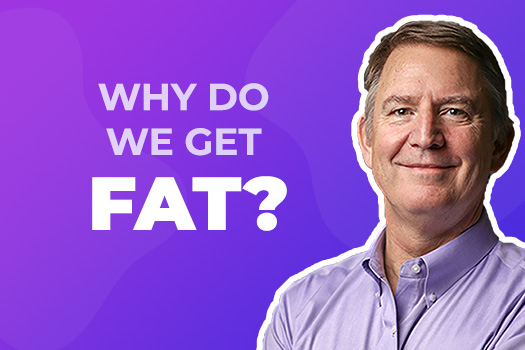I am an author of a recent paper that came out, called The carbohydrate-insulin model: A physiological perspective on the obesity pandemic. The authors include Will Yancey and myself here at Duke, David Ludwig at Harvard, and others. It is a paper that brings together two paradigms – the old “calories in, calories out” way of thinking with the newer carbohydrate-insulin model, the hormonal model of obesity, as a philosophical and scientific rationale or hypothesis to be able to be tested or refuted.
Outdated thinking that is too simplistic
In the low-carb world, we’ve seen “calories in, calories out” as being too simplistic or even as ridiculous as saying a restaurant is crowded because more people went in than came out. It’s a tautology, meaning it’s true, but it doesn’t tell you why the restaurant is crowded or why someone has taken in more calories than their body is expending. In David Ludwig’s primary author role, he said that tautologies and other limitations of self-evident statements are that weight gain happens only with a positive energy balance – i.e., saying that someone is gaining weight because of calories is about as silly as saying that a restaurant is crowded because more people went in than came out – of course that happened! But, was the service good? How was the food? How were the drinks or the view? Why people consume more calories than they expend is the question.
Combining old and new thinking
The paper brings together those limitations of the “calories in, calories out” model with the newer theory that carbohydrates drive blood glucose, and blood glucose drives insulin, which makes fat out of that glucose. It stores it as fat and locks up the fat (in your fat cells) so you can’t get to it. That’s the carbohydrate-insulin model, or the hormonal model of obesity. In this paper, David Ludwig masterfully became a compromiser and appeals to both elements of wanting to put a paper together for hypothesis testing. It’s not saying this is the answer; it’s saying here are some frameworks to use to refute or not and get beyond the idea that we’ve solved what causes obesity.
Limitations of the energy balance model
One of the major limitations of the energy balance model is considering children that are going through a growth spurt. In puberty, children grow and sometimes have voracious appetites. You can’t keep enough food in the refrigerator and they’re not growing because they’re eating more. They’re eating more because they’re growing and it’s the growth hormones that make them eat more. If you’ve ever had a child through adolescence you’ll see that it’s almost uncontrollable. It’s not that the child is growing taller because they’re eating more; they’re eating more because their body is in a growing state. It’s the same for those who are growing wider (accumulating body fat) – it’s the growth of the adipose tissue (fat tissue) sending signals to grow this way that makes people eat more. That’s the carbohydrate-insulin model.
The carbohydrate-insulin model in clinical practice
I use carbohydrate restriction or low-carb diets or the carbohydrate-insulin model as the framework for my practice. It works very well. Our contribution to the academic literature was to basically publish articles going back to the year 2002 on how low-carb diets are effective and safe for obesity and diabetes treatment. I built my program and my work on the work of doctors who came before me, including Dr. Robert Atkins, Dr. Mike and Dr. Mary Dan Eades, Dr. Ron Rosedale, and Dr. Richard Bernstein. They built their practices on the work of doctors before them. It’s great that it is finally getting into the academic literature as a straw person to either refute or validate. This is now the mechanistic or scientific debate that’s going on. You don’t have to wait until this is solved in order to make a change in your lifestyle, but if someone tells you, “Calories in, calories out, it’s a done deal,” say, “Hang on, it could be the carbs; the insulin model is just as valid.” Both have a role to play in our understanding of helping people in fixing obesity, diabetes, metabolic syndrome, polycystic ovary syndrome, high blood pressure, heartburn – the list goes on and on.
Watch the full video here.
